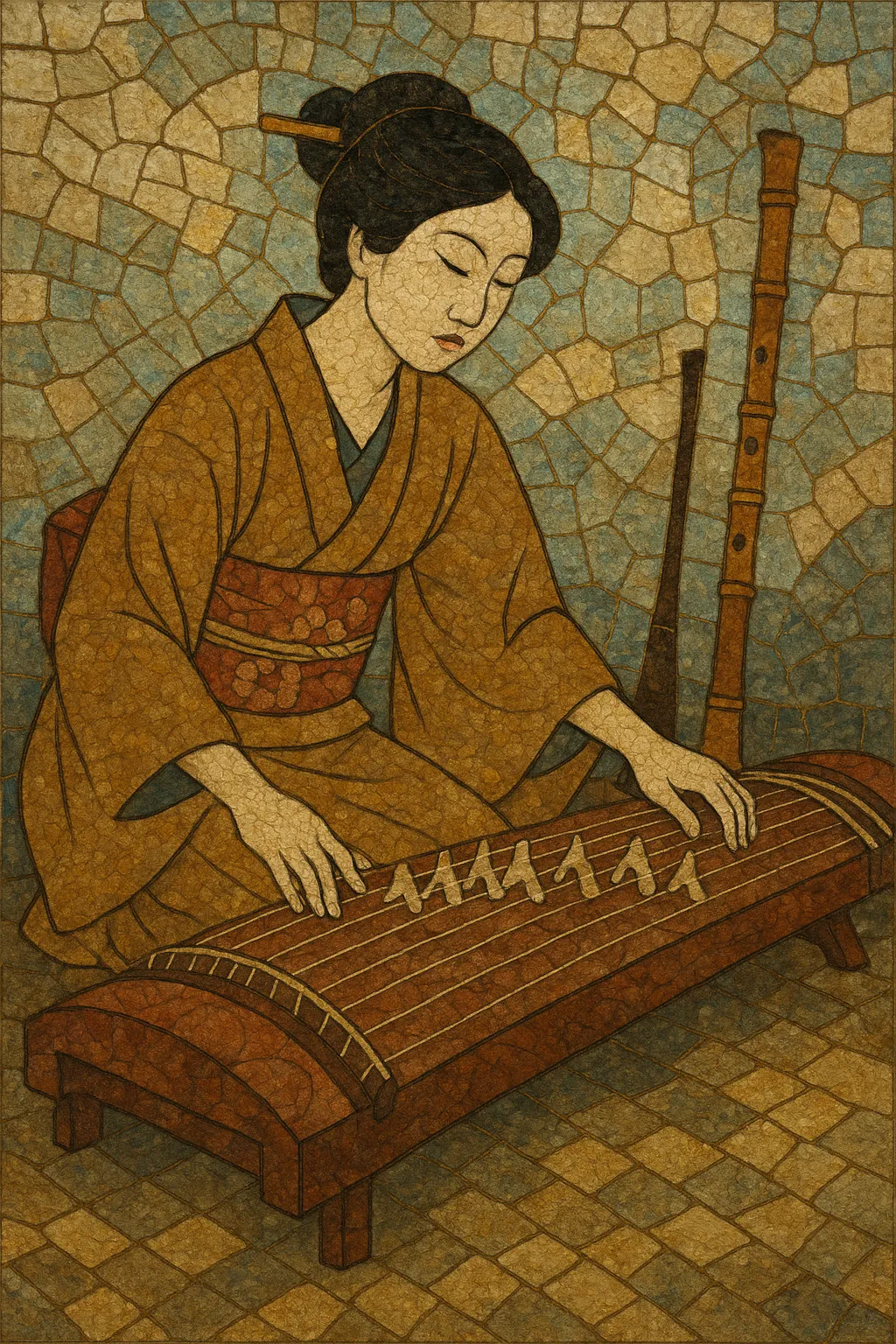Sōkyoku is the classical repertoire for the Japanese koto (a 13-string zither) that crystallized during the Edo period. It encompasses instrumental pieces and vocal works accompanied by koto, and later, chamber ensembles with shamisen and shakuhachi (sankyoku).
The genre is defined by distinctive koto tunings (such as hirajōshi and kumoijōshi), idiomatic plucking techniques using plectra (tsume), and expressive left-hand string pressure to create glissandi and pitch inflections. Major formal types include danmono (multi-section variation sets), kumiuta (song cycles), and tegotomono (works alternating lyrical sections with more elaborate instrumental interludes). Two principal lineages—Ikuta-ryū and Yamada-ryū—shape its aesthetics, repertoire, and pedagogy.
Sōkyoku emerged in the 17th century as koto music took on an independent art-music identity. The instrument itself had long-standing ties to court traditions (gagaku), but figures like Yatsuhashi Kengyō (1614–1685) established idiomatic tunings, forms, and repertory that defined koto practice beyond the court. His danmono set-variation pieces became foundational.
In the late 17th and 18th centuries, Ikuta Kengyō (1656–1715) and later Yamada Kengyō (1757–1817) founded the Ikuta-ryū and Yamada-ryū schools. Ikuta-ryū emphasized ensemble interplay with shamisen and shakuhachi and cultivated a clear, elegant instrumental style, while Yamada-ryū drew on narrative vocal aesthetics related to jōruri/nagauta, favoring more theatrical, song-centered delivery. Both lineages curated extensive repertories of kumiuta, tegotomono, and other forms, and set pedagogical standards that endure.
By the 18th–19th centuries, sōkyoku commonly appeared within sankyoku—the trio of koto, shamisen, and shakuhachi—creating a refined chamber-music texture marked by heterophony and ornamented unison.
In the Meiji and Taishō/Shōwa eras, composers such as Miyagi Michio modernized koto practice—expanding harmonic palettes, experimenting with new instruments (e.g., 17- and 20-string koto), and composing shinkyoku ("new pieces") that bridged traditional idioms with contemporary aesthetics. This modern stream coexists with and draws authority from the classical sōkyoku corpus.
Sōkyoku remains a living tradition taught through ryūha (schools), performed in both historical and modernized formats, and studied as a cornerstone of Japanese classical music.


